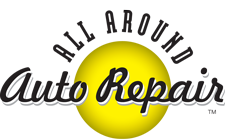Cars often experience some problems and may, therefore, need a bit of some regular check-up and extra attention to get them back running. Thus, you need not worry if your new car is experiencing some problems. You only need to take the necessary precautions to prevent such incidences in future. Below are some of the common car problems and how to fix them.
- Uneven tire wear: It is obvious for car tires to wear out when you are driving. Unevenly worn out tires reduce grip on the road hence they may cause fatal accidents. The easiest way to determine if your car tyres are worn out is by individually inspecting each tire. During the check up, you should focus on whether you there are any bald spots on the inside or the outside of the tire. You may fix by rotating your tires or even having them aligned on a regular basis.
- Difficulty starting the Engine: Your car may take a long time to start or even fail to start such as in the case of a dead battery. In such cases, you should pay attention to the noise it makes when you ignite the key. However, if your car is completely silent, it may be occasioned by loose cable connections or a problem with the battery terminal. Also, you may notice that the car may crank up but it does not start. Such problems could be emanating from your spark plugs or the fuel supply in your engine. In the situation you are out of the road, you should try jump starting the car and then investigate the cause further and reconnecting the loose connections.
- Malfunctioning: Air-conditioner: You may notice that your car’s air conditioner is just blowing the room temperature rather than cold air once you switch it on. Often, this is caused by having a leak in your system in the refrigerating system. For technologically advanced cars, you should refill the refrigerant or procure an own set of air conditioning gauges.
- Engine overheating: While driving, you may notice some smoke or steam emanating from the bonnet of your car or the needle on the engine temperature gauge may surpass the required standards. The simplest corrective mechanism is that you replace your coolant. Also, your coolant may be leaking or occasioned by faulty hoses. It is advisable first to check the underlying cause before refilling your coolant with more. Overheating may also be a result of a faulty radiator fan. You should always check out on your fan motor connection and fan thermostat connection thus ensuring your radiator is running to continue cooling the engine.
- Noisy brakes:There is a variety of reasons for noisy brakes. First, it may be due to loose or worn out brake pads or secondly, your brake pads may have dust inside the drums. Since brake dust is dangerous once inhaled, you should take your car to a specialist who should tighten brake pads, replace them with new ones and dust out the brake drum.
- Leaky radiator: Symptoms of a leaking radiator are evident when you cannot see your anti-freeze when you take off the cap. It is a better idea to replace the entire radiator rather than wielding it or applying a sealant to it. You should start by jacking up the car and also by opening up the drain bolt at the bottom thus removing all the coolant. If you are driving an automatic car, it’s advisable to replace the entire transmission line.


